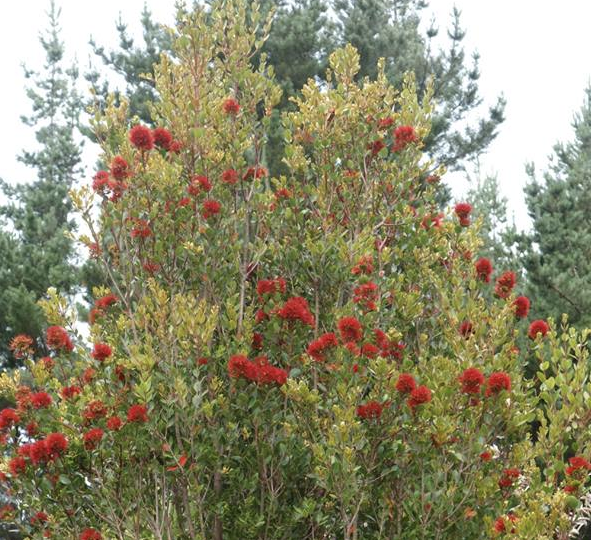The Forest
Reforesting and protecting 93ha of indigenous forest in Mōhua (Golden Bay), Aotearoa. A community-based forest carbon project combined with public tracks for human-powered recreation. Situated on the slopes towering above the Tākaka Valley, Project Rameka is restoring indigenous forest on marginal farmland.
The revegetation of marginal farmland in native species is being done through a combination of active tree planting and passive regeneration - especially in the wetter gullies. There is also an area of pine forest that is being used as a nursery for native regeneration and will now not be felled. Instead it creates a micro-environment for native trees to return under the cover of a pine canopy, as well as shelter for native plantings in the surrounding area.
Rameka mānuka flowers
The land is protected by a QEII Covenant
Rameka forest rata crop
The People
There is fun to be had.
The core project is located on land purchased by Jonathan Kennett and Bronwen Wall, who wanted to do something practical about climate change by reforesting a corner of Aotearoa and soaking up some atmospheric CO2 into forest. They then established a community project on the land, to restore the native forest and build tracks for the public to enjoy. They subsequently purchased a neighbouring property with the help of 62 crowd funding supporters, and grew the project to its current size.
Bronwen and Jonathan have established a community organisation (Project Rameka) to manage and maintain the covenanted area. Accordingly, the project is enthusiastically supported by regular volunteer days and weekends, track building, tree planting, pest control, and weeding.
The Location
Technical Stuff
The Rameka Forest Carbon Project is being undertaken under the Permanent Forest Sink Initiative - a subset of the New Zealand Emissions Trading Scheme. The project issues New Zealand Units (NZUs) based on New Zealand Government rules for carbon sequestration rates by indigenous forest.
Once the NZUs are sold to a carbon offset buyer, they are cancelled in the New Zealand carbon unit registry, so they cannot be used by (or sold to) anyone else.
Follow The Money
Conservation costs money. The main cost elements are:
Community development support costs (e.g. walking & mountain bike tracks, improved visitor accommodation).
Conservation management costs. This includes pest and weed control, forest monitoring, and the administration of the carbon project (carbon returns, registry account management and general administration).
Opportunity costs. This is the revenue that the landowner has given up to enable forest conservation to happen. In this project the landowner gave up revenue from pastoral farming - revenue that would normally be used to make a living off the land.
Measurement, reporting and verification costs required for carbon offset certification to an international carbon standard.
When carbon credits are sold from this project the revenue goes to cover these costs.
Follow the Rameka Forest
In the Facebook group or on the website.









